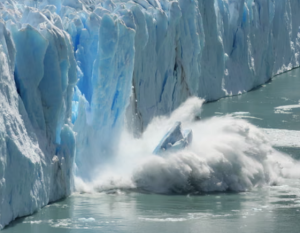Why Foundations Fail: The Science of Soil, Water, and Structural Integrity

Every structure relies on its foundation for stability. In Florida—where soils vary widely and water tables swing seasonally—foundations face year-round stresses. Over recent decades, storms have intensified and sea levels have risen, increasing wind and water forces exerted on structures. Understanding why foundations fail lets you prevent damage and protect property value.
The Role of Soil in Structural Performance
Florida Building Code requires geotechnical investigation, including soil borings, for new foundation designs. This was reinforced after the 2004–2005 hurricane seasons when widespread failures exposed the cost of shallow subsurface knowledge.
Expansive Clays (Blue-Green Clays)
These appear as thin layers, thick layers, or isolated pockets. When they sit in the seasonal water-table fluctuation zone (about 2–6 ft below grade), annual wet/dry cycles drive shrink-swell movement:
- Wet season (June–September): clays swell and can impose uplift forces in the thousands of pounds per square foot, cracking slabs and heaving floors.
- Dry season (October–May): clays shrink, leaving voids and driving settlement.
The cumulative result over years: slab cracks, floor heave, and wall distress.
Sandy Soils
Bearing capacities vary from roughly 1,500 psf (loose) to 4,000+ psf (dense, well-compacted). Plasticity, density, and moisture content matter. At Foundation Masters, engineers perform in-situ density testing before construction to confirm actual load-bearing capacity rather than relying on assumptions.
Organic & Fill Soils
Organic soils compress over time. Poorly compacted fills from past building booms settle unevenly, leading to differential movement and cracking if not remediated.
Expert link: Florida Building Code
Water — The Invisible Force

Hydrostatic pressure is the leading cause of foundation and earth-retention failures in Florida.
- Pressure math: for every 1 ft of groundwater height, lateral hydrostatic pressure increases by about 62.4 psf.
- High water-table swings: historically ~1–2 ft/year; in recent decades many Florida areas see 3–5 ft swings, amplifying uplift, settlement, and erosion cycles.
- Poor drainage → erosion and raveling: in sandy and karst (limestone) terrains, uncontrolled water washes out fines, undermining bearing layers and driving sinkhole activity.
External references: NOAA Sea Level Trends· NASA Sea Level Change
Structural Loads & Foundation Response
A foundation must resist multiple forces:
- Dead loads — permanent structure weight (concrete, steel, masonry).
- Live loads — people, furniture, vehicles, and temporary use.
- Lateral loads — soil pressure, seismic forces, and hurricane winds striking walls.
- Wind loads — hurricanes now routinely deliver 130–155+ mph winds. When wind hits a roof, it adds both lateral and vertical components into the foundation system.
Timeline examples: 1960 Hurricane Donna ~130 mph; 1992 Hurricane Andrew ~165 mph; 2022 Hurricane Ian sustained ~155 mph.
Real-World Case Studies
Millennium Tower Collapse, Miami
Ignoring early distress signals is costly. In 2019, Foundation Masters inspected planter-box and pool-deck distress consistent with longer-term structural concerns. Deferred maintenance amplified the risk envelope.
Crawlspace Moisture + Increasing Live Loads
Many mid-century Florida homes use crawlspaces. Seasonal high water floods these spaces, saturating joists and beams. Within 3–5 years of chronic wetting, wood members can lose up to ~50% strength due to mold and decay organisms.
A common layout: 2×10 floor joists spanning ~13 ft between exterior walls and interior girders. Moisture-softened joists plus higher modern body weights produce a noticeable “trampoline effect”—floors bounce, drywall cracks at door corners, and finishes separate. Left unaddressed, the bounce worsens year after year until major structural repair is required.
Climate Forces on the Rise — Glaciers, Oceans, Storms

Melting glaciers and warming oceans drive sea-level rise and energize storms, increasing both hydrostatic and wind demands on Florida structures.
- Acceleration in global sea level: the long-term rate increased from about 2.1 mm/yr (1990s) to ~4.5–5 mm/yr in the 2010s–2020s.
- Florida gauges: Key West and Miami (Virginia Key) show roughly 1–2 inches per decade recently.
- Recent jump: multiple analyses noted 2024 sea level rose faster than expected as ocean heat content hit records, further elevating storm surge baselines.
External references: NOAA Sea Level Trends NASA Sea Level Change: UN/WMO coverage: http://www.reuters.com/business/environment/
Prevention, Adaptation, Resilience
- Before construction: borings, lab tests, density verification, and geotechnical design.
- During construction: use piles/piers or other deep foundations where soils are weak; install drainage and waterproofing correctly from day one.
- After construction: relieve hydrostatic pressure with engineered drainage; monitor seasonal water-table impacts.
- After major storms: inspect for new cracks, settlement, or lateral movement; adjust drainage and reinforcement as needed.
Get expert help: For forensic evaluation and permanent repair design tailored to Florida conditions, contact Foundation Masters. For waterproofing systems that counter hydrostatic pressure and crawlspace moisture, see Foundation Waterproofing 101.
